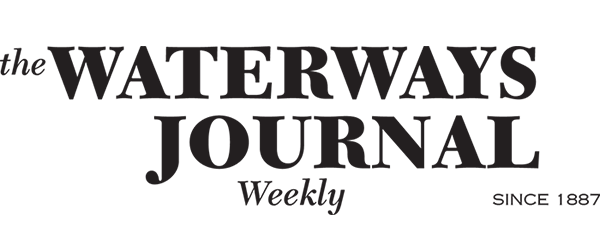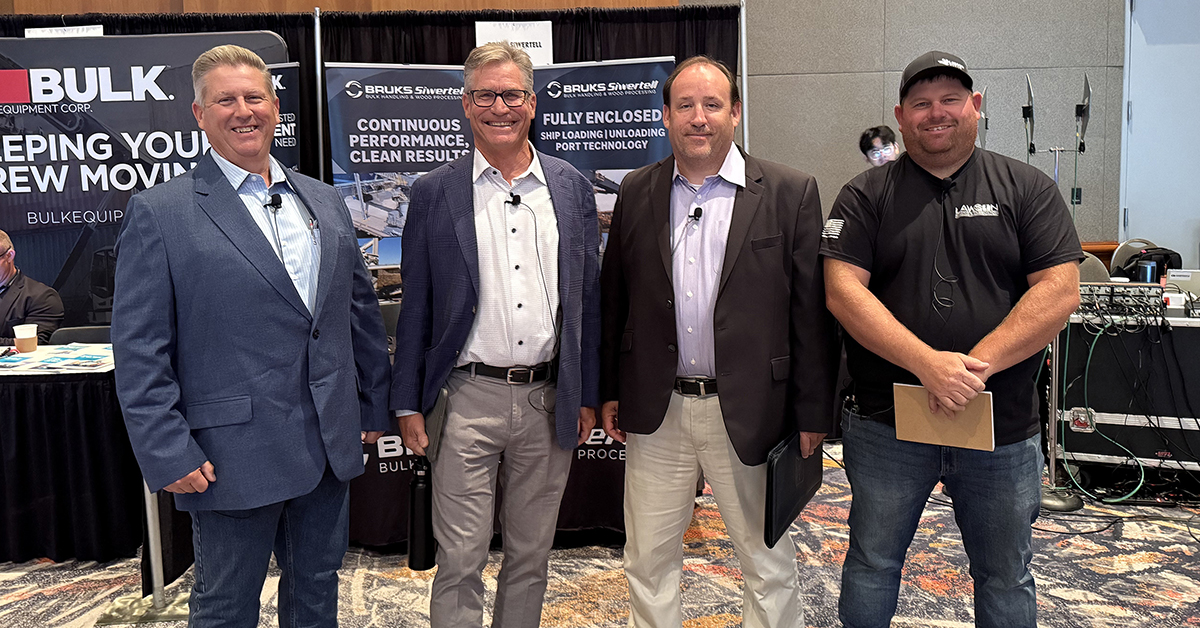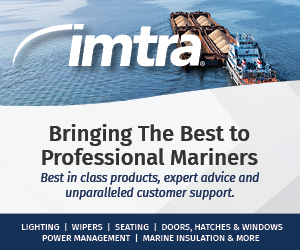During the annual conference of Inland Rivers Ports & Terminals Inc., held in Milwaukee in October, Seth Lawson of Lawson Marine & Rigging moderated a panel discussion titled “Inland River Dredging: Challenges and Sediment Solutions.”
Panelists included Randall Chamness, vice president of vessel operations for American Commercial Barge Line, Tim Eaker, fleet manager with Great Lakes Towing Company, and transportation consultant Bill Murchison.
Lawson opened the conversation focusing attention on low water, which has impacted vessel operations this season throughout the system. Lawson urged companies of all sorts to be engaged with waterway managers and policymakers.
“Even if you’re not a major shipper or a big dredging company, low water hits your business just as hard,” he said. “Show up, get involved and talk to your legislators. They do listen.”
Chamness made clear the impact that draft and channel restrictions have on towing companies engaged in moving cargoes—particularly agriculture products—to market.
“Our goal is to move every barge as deep and as fast as we can,” he said. “But in low water, 1 inch of draft equals roughly 15 to 17 tons. At $45 a ton on a 2,000-ton barge, the economics are massive.”
Chamness pointed to the success of the Corps of Engineers’ dredge program on the Mississippi River and its tributaries a year ago. The renewed commitment to that effort each year is critical to barge movements, he said.
“There’s predictability. We know the usual half-dozen trouble spots, but every year new spots appear,” Chamness said. “If we wait until near channel failure, closures stack up boats for days, and it can take months to unwind.”
Chamness said a key effort that would improve reliability is the campaign to modernize the congressionally authorized 9-foot by 300-foot channel on the Mississippi River and connected waterways.
“Moving to 12 by 300 lets us run wider tows and deliver more tonnage through harvest,” he said. “We’ve learned a lot from two record low-water years. We can stay productive and safe in the worst conditions, but starting earlier with more assets would keep the river open longer.”
The cost of channel constraints impacts vessels on the Great Lakes, both ocean-going “salties” and freshwater “lakers” as well, Eaker said.
“On the lakes, 1 inch of lost draft can cost a ship about $25,000,” Eaker said. “That’s why we need to be proactive—keep harbors deep before groundings happen.”
While sediment dredged in the Mississippi River is often released into the channel in order to float downstream, material dredged from harbors along the Great Lakes goes into confined disposal facilities, or CDFs.
“Across the lakes, there are dozens of CDFs, and roughly half are at or near capacity,” Eaker said. “Ports are raising dike walls, dewatering and treating water where needed, and where material is clean, moving it to construction uses. The logistics and treatment costs add up, so steady, usable funding matters.”
Eaker then called on the efficient use of the Harbor Maintenance Trust Fund.
“By 2025, there’s roughly $9 billion sitting in that fund,” Eaker said. “Shippers already paid it, because they know dredging is essential. If a project can’t finish in one fiscal year, don’t penalize the Corps for carrying funds forward. Let them roll it over so we can actually complete big jobs and be proactive.”
Murchison emphasized the need to view dredged material as a resource and not a problem to be disposed of.
“We should be developing beneficial uses—ag land, shoreline projects, light aggregates—so we’re not stuck reacting every season,” he said.
Murchison credited the Corps for its growing creativity with respect to and emphasis on the beneficial use of dredged material. He then called on ports to tap grants and harbor maintenance dollars whenever they’re able to do so.
“We’re all environmental stewards here,” he said. “The challenge is closing the cost gap between classic placement and better outcomes. That’s where creative funding and partnerships come in.”
In terms of beneficial use, the panel pointed out one major barrier: a patchwork of state standards for testing, placement and water quality management. Those issues often make moving dredged material across state lines difficult and expensive, they said.
“It’s tough when one state treats dredged material one way, and the next state requires a completely different playbook,” Murchison said.
He added that there is momentum for standardizing dredged material at the federal level so that states and individual ports can use that material where it makes sense.
Chamness called attention to the issue of dredge availability.
“The Corps does a strong job with the assets it has, but limited dredge availability forces a lot of reactionary work,” Chamness said. “Mobilize a dredge, do a small volume, [demobilize], wait for next year. Meanwhile, some of that material re-accumulates. Bigger, earlier cuts would save time and money and keep tows moving.”
Lawson closed the session where it began—with an emphasis on advocacy.
“When small contractors, harbor services and the big operators are all singing from the same hymnal, elected officials notice,” he said. “Proactive dredging, consistent standards and access to funds we’ve already paid—that’s how we keep the system resilient.”
Featured image caption: From the right, Seth Lawson with Lawson Marine & Rigging; Randall Chamness, vice president of vessel operations for American Commercial Barge Line; transportation consultant Bill Murchison; and Tim Eaker, fleet manager for Great Lakes Towing Company gather for a photo following their dredging-focused session at the annual meeting of Inland Rivers, Ports & Terminals in October. (Photo courtesy of IRPT)
(With reporting by Frank McCormack)



